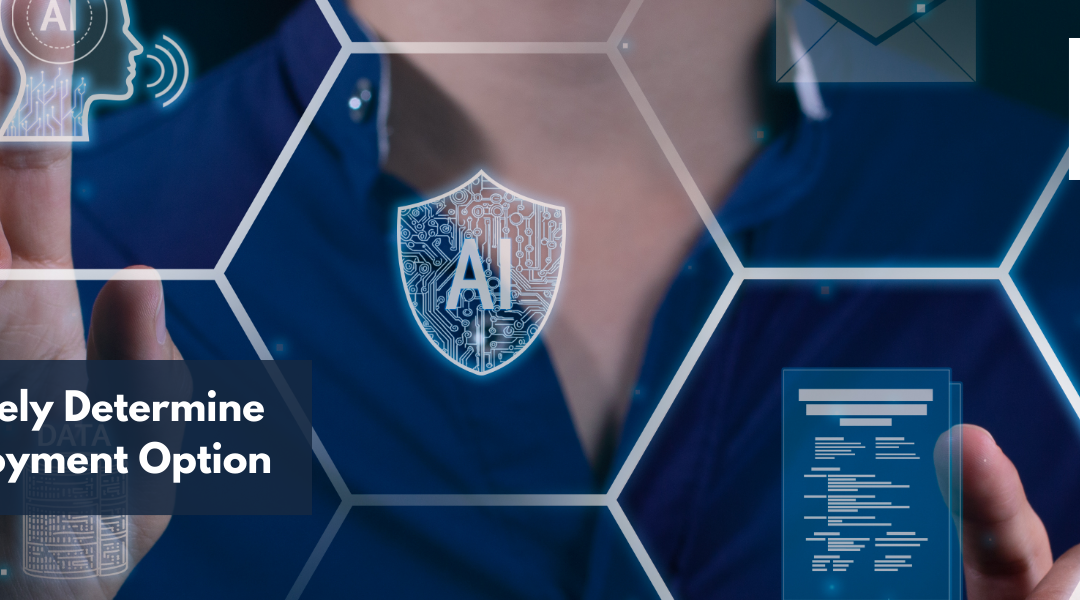Excelling in AI Deployment: 6 Proven Practices for Project Success
This is the fifth blog post for NanoMatriX’s AI Learning and Awareness series.
AI has revolutionized various sectors, offering the latest automation, efficiency, and innovation opportunities. However, unlocking the full potential of an AI model relies on choosing the most suitable deployment option.
With a multitude of deployment models available, each with its advantages and limitations, selecting the optimal one can be a complex undertaking. This article serves as a comprehensive guide, equipping you with six crucial strategies to navigate the decision-making process and confidently choose an AI deployment option based on your specific needs. By following these key strategies, you’ll be well-equipped to make a confident choice that propels your AI project toward success.
1. Explore the use case
The first step in choosing an AI deployment option is to thoroughly explore the use case. This involves understanding your business’s unique requirements and objectives and the specific problem you are trying to solve with AI. By deeply understanding your use case, you can identify the most suitable AI solution that aligns with your business goals and objectives.
The insights gained from analyzing a specific use case are invaluable, as they can be applied to other scenarios, thereby demonstrating the adaptability of the model for various applications. As the process continues, the most suitable deployment option may change based on evolving criteria, priorities, and insights obtained during the evaluation.
2. Analyze key direct cost drivers
When determining an AI deployment option, it is crucial to analyze key direct cost drivers to generate an accurate cost estimate for various deployment options. The following factors should be considered:
Foundation model
Choose the foundational model on specific performance or features for customization that are necessary for your particular use case. Remember that this choice can significantly impact performance, customization, and cost. The choice of your Foundation model impacts the performance, cost, and customization of your AI model.
Pricing type
The pricing type for foundation models can be on-demand (pay per token) or provisioned throughput (pay per hour of use). On-demand is more flexible but it’s good for unpredictable usage, while provisioned throughput is cost-effective at scale but requires consistent, high-volume usage.
Fine-tuning & customization
The level of customization needed for the use case will determine whether tuning the model is necessary. Tuning allows for model customization to better align with specific use-case requirements but most use cases won’t need training and prompt engineering is available, potentially increasing accuracy but also costs.
Model training
The choice to train the model from scratch or use pre-existing foundation models depends on the availability of relevant training data, expertise, and budget for training. Full training allows for highly customized models at a higher cost while choosing not to train is more cost-effective with quicker deployment.
Instance type
The instance type chosen for custom deployments should be based on computational requirements and budget constraints. Instance type determines computational resources, affecting performance and cost.
Embedding approach
The choice to embed data or not depends on whether the model requires additional data relationships for better performance. Embedding enhances performance but could increase complexity and costs.
Data costs
Costs for data storage, vector databases, and data acquisition should be considered when training models from scratch or when large datasets are involved. These costs are directly tied to the scale of data used in model training and operation.
Volume-tokens
Determine tokens used per year for inference, embedding, fine-tuning, and returning based on use-case requirements and data processing needs. But don’t first it can impact budgeting and processing costs.
Number of model units
Determine based on the capacity of the foundation model and estimated TPM/RPM when utilizing Provisioned Throughput to ensure adequate capacity for handling transactions/requests. Provisioned throughput is the maximum amount of capacity that an AI application can consume from a table or index.
Engineering costs (Talent)
Calculate costs for required personnel for setup, run, integration, application setup, support, and testing depending on deployment complexity.
3. Calculate indirect costs
In addition to direct costs, it is essential to calculate indirect costs when determining an AI deployment option. Indirect costs include factors such as maintenance and support, which can significantly impact an AI solution’s total cost of ownership (TCO).
These 2 factors include:
- Operational Compliance & Maintenance that covers ongoing maintenance, legal & risk management. In this case, Complex deployments with advanced models require more expertise for maintenance and compliance, leading to higher FTE needs.
- Organizational Change Management is related to strategy consulting, change management efforts, and miscellaneous costs. Such larger-scale deployments necessitate more extensive change management efforts and strategy consulting, impacting the cost of integrating the AI system smoothly within your organization.
4. Quantify benefits
To accurately determine an AI deployment option, it’s essential to identify and quantify potential benefits, including revenue increase and cost savings. This involves assessing the financial impact of the GenAI deployment on your organization, taking into account factors such as the baseline figure, revenue upside, and cost savings.
- Baseline figure: Understanding the existing financial landscape of the company serves as a benchmark for assessing the financial impact of GenAI deployment.
- Revenue upside: This refers to the potential increase in revenue that can be attributed to GenAI deployment. Factors such as additional spending per customer or improved customer retention contribute to this revenue uplift.
- Cost savings: Identifying reductions in operational or direct costs resulting from efficiencies created by GenAI, such as process automation, is crucial. This includes evaluating how GenAI can streamline operations and lead to cost savings.
Hence, balancing potential gains with investment is key to choosing the most cost-effective AI deployment option. Also, the highly customizable and scalable options seem expensive upfront, but they can ultimately unlock greater revenue opportunities and cost reductions, making them a potentially smarter long-term investment.
5. Assess the business viability
Assessing business viability involves evaluating the return on investment (ROI) and other metrics to understand the financial impact of AI deployment. This step involves calculating the payback period for each deployment archetype and comparing the ROI across different options.
- ROI assessment: Calculating Return on Investment (ROI) involves inputting running costs, secondary costs, and economic upsides for subsequent years as a percentage of Year 1 to estimate the Payback Period for each deployment archetype.
- Payback period comparison: Comparing the payback period across different deployment archetypes helps in understanding and comparing the return on investment over time, aiding in selecting cost-effective deployment options aligned with budgetary constraints.
But how will it impact your deployment option? In simple words by understanding the ROI and payback period, you can select deployment options that are cost-effective and align with your budgetary constraints while delivering the desired benefits.
Also, the highly customizable and scalable options seem expensive upfront, but they can ultimately unlock greater revenue opportunities and cost reductions, making them a potentially smarter long-term investment.
6. Examine tradeoffs and strategic factors
When making a holistic decision on whether to deploy a GenAI solution, it is crucial to consider various tradeoffs and strategic factors beyond cost and benefit. These factors include:
- Existing technology investments: Leverage existing technology investments to maximize cost-efficiency and ease the integration of GenAI solutions.
- Flexibility: Evaluate the flexibility of the deployment option to accommodate future use cases, ensuring a forward-looking GenAI implementation.
- Legal and regulatory landscape: Comprehend the legal and regulatory landscape to ensure compliance and effective risk management in your GenAI deployment.
- Workload and scalability: Assess the anticipated workload and scalability requirements to ensure the chosen deployment option can handle the demand efficiently.
- Deployment timeframes: Consider the deployment timeframes to ensure the GenAI solution can be launched promptly to meet market or organizational timelines.
- In-house expertise or external talent: Ensure there’s sufficient in-house expertise or accessible external talent to manage, maintain, and optimize the GenAI deployment.
By examining these strategic factors, you can make informed deployment decisions that align with your long-term organizational goals, ensuring a successful and beneficial GenAI implementation.
Enhance Your Business Processes with NanoMatriX’s Advanced AI Solutions!
Ready to revolutionize your product and document authentication with cutting-edge AI-enabled solutions? Contact NanoMatriX Technologies Limited today to schedule a consultation and learn how our advanced technologies can safeguard your brand and data from counterfeit activities.
Our team of experts will guide you through implementing tailor-made anti-counterfeiting solutions that align with your unique requirements. Don’t wait any longer – take the first step towards securing your critical assets with NanoMatriX.
Read the Sixth blog post for NanoMatriX’s AI Learning and Awareness series here.

















Recent Comments